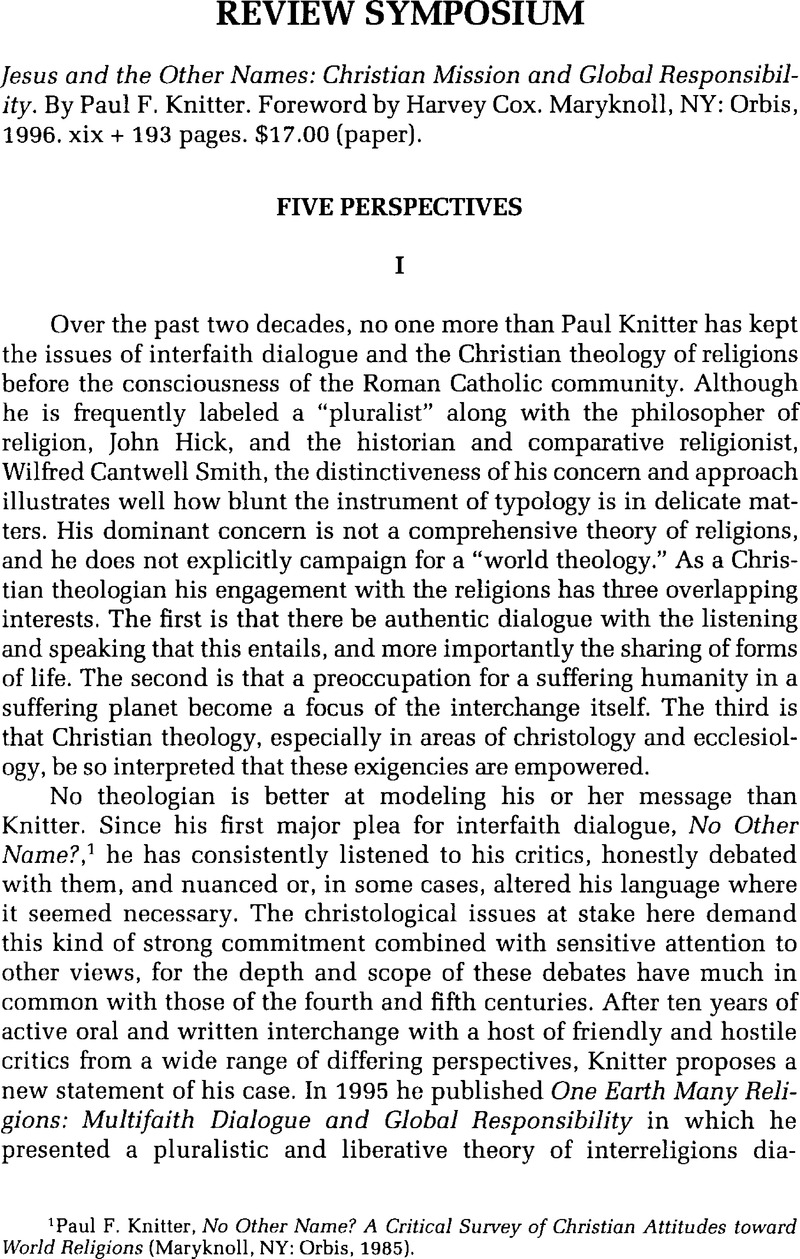Published online by Cambridge University Press: 09 September 2014

1 Taylor, Mark, Remembering Esperanza: A Cultural-Political Theology for North American Praxis (Maryknoll, NY: Orbis, 1990), 23–45.Google Scholar
2 See the address originally given by Cardinal Ratzinger in May 1996 and published as “Relativism: The Central Problem for Faith Today,” Origins, 10 31, 1996, 309–17.Google ScholarPubMed
3 See One Earth Many Religions, chap. 8.
4 At the 1997 meeting of the Catholic Theological Society of America, there was a session on “Is the Theology of Religions Obsolete? Comparative Theology as an Alternative to Theology of Religions.” Clooney, Frank, Hellwig, Monika, and I were on the panel. Clooney's book, Theology after Vedanta: An Experiment in Comparative Theology (Albany: SUNY Press, 1993), was a pioneering work that helped open and focus the discussion.Google Scholar
5 One example of such a personal dialogue I carried on with Masao Abe in the pages of this journal: “Spirituality and Liberation: A Buddhist-Christian Conversation,” Horizons 15 (1988): 347–64.CrossRefGoogle Scholar See also the two chapters in the recently revised and expanded edition by Hill, Brennan, Knitter, Paul, and Madges, William, Faith, Religion, and Theology (Mystic, CT: Twenty-Third, 1997)Google Scholar: “Jesus and Buddha: A Conversation” and “World Religions and Global Responsibility.”
6 Even though Haight notes a certain building consensus on a correlational christology in the discussions contained in Swidler, Leonard and Mojzes, Paul, eds., The Uniqueness of Jesus: A Dialogue with Paul Knitter (Maryknoll, NY: Orbis, 1997).Google Scholar
7 Titled Jesus the Symbol of God, to be published by Orbis Books.
8 See Segundo, Juan Luis, The Historical fesus of the Synoptics (Maryknoll, NY: Orbis Books, 1985).Google Scholar
9 Citations from this letter are with permission of the author. Baum's practical perspective on how doctrine develops was recently placed in broader perspective in this journal by Schweitzer, Don, “Gregory Baum on the Revelatory Work of the Holy Spirit,” Horizons 24/1 (Spring 1997): 73–88.CrossRefGoogle Scholar